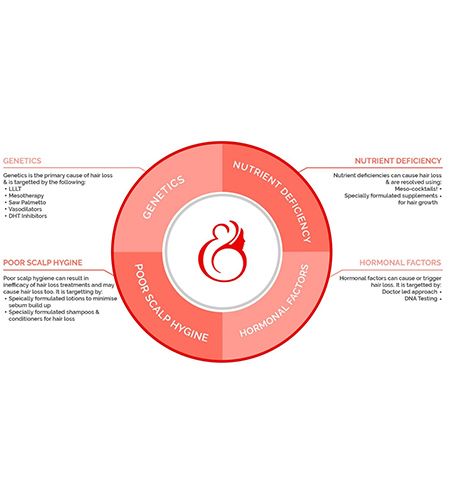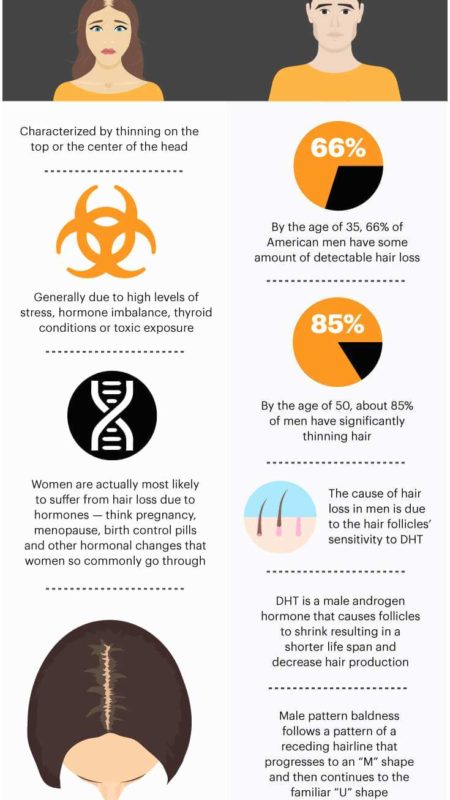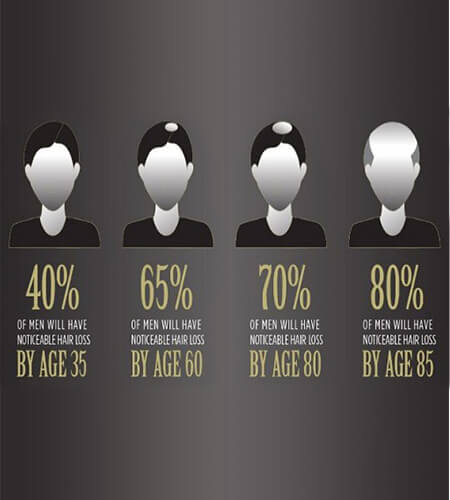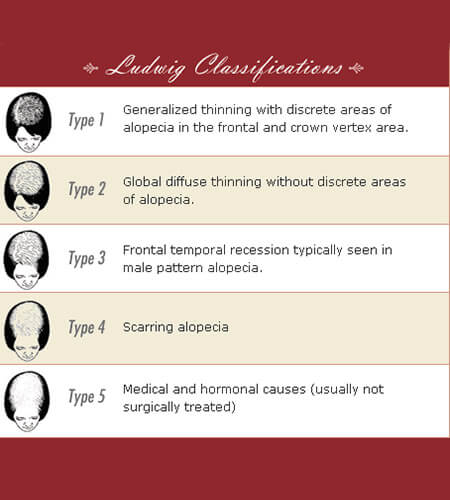
Hair Loss
Learn about our history and workCAUSES OF HAIR LOSS
Hair loss is a most common problem which affects millions of men, women, and children. Half of adults both men and women will experience hair loss of hair by the time they are 60,
To loose hairs between 50-100 is normal which part of the hair renewal process is. Most people suffer from excessive hair loss at one time in their life.
There are many reasons for hair loss including medication, radiation, chemotherapy, chemicals exposure, hormonal and nutritional deficiency, thyroid problem, generalized or local skin disease, and excess stress.
HAIR LOSS IN MEN
Hereditary hair loss in men is due to the influence of dihydrotestosterone (DHT) on genetically susceptible scalp hair follicles. Hair follicles cycle repeatedly through anagen stage that usually lasts 2-6 years and a resting telogen phase that last 1–4 months.
Influence of hormone DHT causes hair follicles of the scalp to gradually spend more time in the resting phase and less time growing phase. As a result miniaturization of the hair follicle occurs which lead to stops producing hair completely.
Miniaturization of hair follicle.
GENES IN HAIR LOSS
Many people have believes that, “hair loss comes from the mother’s side of the family. There is a slightly higher frequency of inheritance from the mother’s side but male pattern hair loss is a genetic trait that can be inherited from either parent.
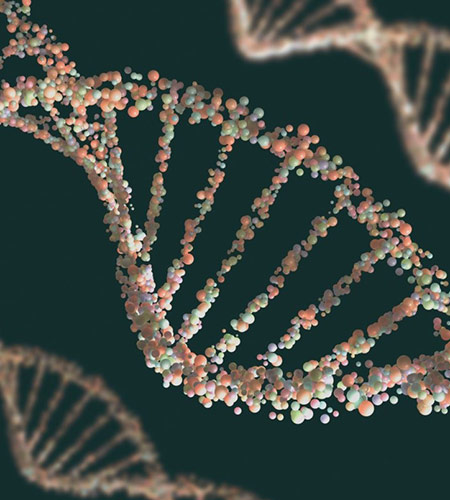

ROLE OF HORMONES IN HAIR LOSS
Hormones are biochemical products produced by various glands located throughout the body. These glands release hormones directly into the bloodstream, spreading the chemicals throughout the body.
The adrenal glands, located above each kidney in both men and women also produce androgenic hormones. In females, the ovaries are an additional source of hormones which can affect hair growth.
ROLE OF HORMONES IN HAIR LOSS
It is true that genes and hormones are not sufficient on their own to cause baldness. When a person has reached puberty, susceptible hair follicles must continually be exposed to DHT hormone over time for hair loss to happen.
The age at which these effects manifest varies from person to person and is related to individual’s genetic composition, testosterone level in the bloodstream, and the folliclular sensitivity to the hormone.
INCIDENCE OF MALE PATTERN BALDNESS BY AGE
Androgenetic alopecia or common male pattern baldness (MPB) accounts for more than 95% of hair loss in men. By the age of thirty-five two-thirds of men will experience some degree of appreciable hair loss and by the age of fifty approximately 85% of men have significantly thinning hair.
Approximately twenty five percent of men who suffer with male pattern baldness begin the painful process before they reach the age of twenty-one.
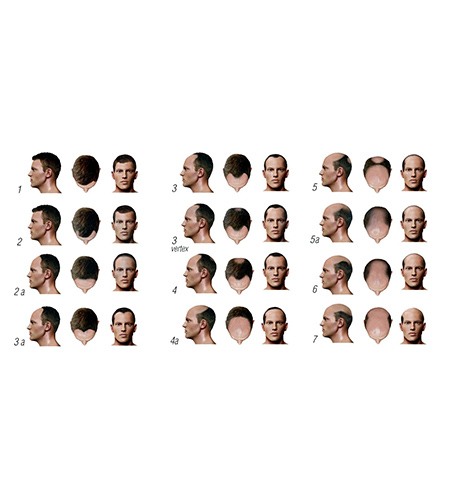
CLASSIFICATION OF HAIR LOSS IN MEN
The Norwood system of classification is the most commonly used classification for hair loss in men. It defines two major patterns and several less common types.
In the regular Norwood pattern, two areas of hair loss gradually enlarge to produce recession at the temples and thinning in the crown. These regions coalesce until the entire front; top and crown (vertex) of the scalp are bald.
CLASSIFICATION OF HAIR LOSS IN WOMEN
The Ludwig Classification uses three stages to describe female pattern genetic hair loss:
- Type I (Mild)
- Type II (Moderate)
- Type III (Extensive)
In all three Ludwig stages, there is hair loss on the front and top of the scalp with relative preservation of the frontal hairline. The back and sides may or may not be involved. Regardless of the extent of hair loss, only women with stable hair on the back and sides of the scalp are candidates for hair transplant surgery.
- Type I (Mild): Early thinning that can be easily camouflaged with proper grooming. Type I patients have too little hair loss to consider surgical hair restoration.
- Type II (Moderate)Significant widening of the midline part and noticeably decreased volume. Hair transplantation may be indicated if the donor area in the back and sides of the scalp is stable.
- Type III (Extensive)A thin, see-through look on the top of the scalp. This is often associated with generalized thinning.
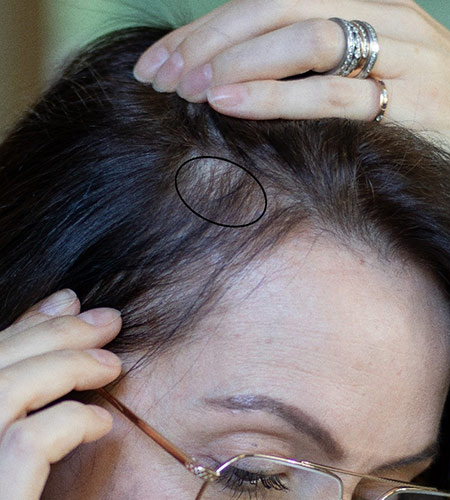
MEDICAL CONDITIONS OF DIFFUSE HAIR LOSS IN WOMEN:
- Obstetric and gynecologic conditions such as ovarian tumors, post-partum and post-menopausal states.
- Iron deficiency anemia.
- Thyroid disease.
- Connective tissue diseases, such as Lupus.
- Nutritional causes including crash diets, bulimia, protein/calorie deficiency, essential fatty acid or zinc deficiency and hypervitaminosis A.
- Stress from surgical procedures, general anesthesia, or severe emotional problems.




